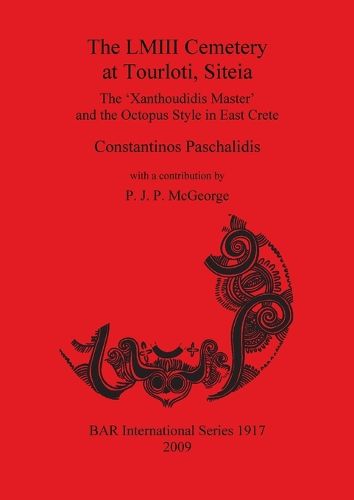The LM Cemetery at Tourloti Siteia: The 'Xanthoudidis Master' and the Octopus Style in East Crete
Constantinos Paschalidis

The LM Cemetery at Tourloti Siteia: The ‘Xanthoudidis Master’ and the Octopus Style in East Crete
Constantinos Paschalidis
This title is printed to order. This book may have been self-published. If so, we cannot guarantee the quality of the content. In the main most books will have gone through the editing process however some may not. We therefore suggest that you be aware of this before ordering this book. If in doubt check either the author or publisher’s details as we are unable to accept any returns unless they are faulty. Please contact us if you have any questions.
Halfway along the mountainous route between the Ierapetra isthmus and Siteia, on the northern limits of the western mountain range of the Siteia province (eastern Crete), is the small village of Tourloti. Approximately 2.5 kilometres north of the village, on the hillside that drops down to the beach at Mochlos, on the site of Plakalona, is a LMIII chamber tomb cemetery. Richard B. Seager was the first to identify and excavate the site in 1900. He collected the LMIII stirrup-jar now in the museum of the University of Pennsylvania. In 1906, Stefanos Xanthoudidis reported that ‘Mycenaean’ copper alloy weapons and tools had been found at Metochia, Tourloti. The first brief archaeological report for investigations in the area was published in 1938 by Manolis Mavroreidis of Siteia, temporary curator of antiquities and schoolteacher, who excavated a rich grave at Plakalona, unpublished to this day. In 1959, Nikolaos Platon identified a further group of rock-hewn chamber tombs, which he never excavated, despite his original intentions. The chance discovery of seven vases from one or more tombs at the end of the 1950s or the beginning of the 1960s once again disturbed the peaceful cemetery. The vases were presented to the Archaeological Service of Siteia, as wellas a LMIIIC tub larnax from the same cemetery. In June 1984, after the Town of Tourloti notified the Archaeological Service of antiquities found during construction work and a (looted) chamber tomb was explored at Plakalona, as well as a second, richly appointed chamber tomb. A third looted LMIII chamber tomb was identified in 1990 and recently (2006) another wealthy chamber tomb. This work presents the finds of the chamber tombs excavated and the vases handed over previously. The latter group includes Octopus Close Style stirrup-jar presented in the volume’s second chapter together with a discussion of its attribution to a particular workshop and a distinct vase painter conventionally dubbed the ‘Xanthoudidis Master’. In the absence of petrographic or other analysis, the hypothesis on the vase’s provenance is based on morphological and stylistic criteria and on the fabric’s macroscopic examination. A study of the human bones from the Papadakis excavation by Dr P.J. P. McGeorge completes this volume.
This item is not currently in-stock. It can be ordered online and is expected to ship in 7-14 days
Our stock data is updated periodically, and availability may change throughout the day for in-demand items. Please call the relevant shop for the most current stock information. Prices are subject to change without notice.
Sign in or become a Readings Member to add this title to a wishlist.


